Introduction
APIs, or Application Programming Interfaces, play a crucial role in the world of web services and software applications. Two popular types of APIs, SOAP and REST, offer distinct approaches with unique benefits. In this article, we will explore the key differences between SOAP and REST APIs, their messaging protocols, standards and compliance, operations and features, scalability and performance, caching and statelessness, security and reliability, and their use cases.
By understanding the nuances of SOAP and REST APIs, developers and businesses can make informed decisions and leverage the power of APIs to drive digital innovation and achieve operational excellence.
What is SOAP API
The Simple Object Access Protocol (SOAP) is more than just a messaging protocol; it's the cornerstone of complex enterprise systems where security and robust communication are paramount. Acting as a bridge between programs on various operating systems, SOAP harnesses the versatility of XML (Extensible Markup Language) to format messages, while typically utilizing HTTP or SMTP for transmission.
In the realm of sustainable energy, for instance, Bosch's development of its solid oxide fuel cell (SOFC) system showcases the power of digital integration in modern enterprise. This system, which delivers efficient, low-emission electrical power, leverages a digital twin—a virtual model that mirrors the physical SOFC. This digital companion enables real-time visualization and monitoring of process parameters, facilitating optimized performance throughout the system's lifecycle, a testament to Bosch's commitment to marrying digital prowess with physical engineering.
Similarly, TotalEnergies Digital Factory (TDF), a wholly-owned subsidiary of the energy giant, underscores the pivotal role of APIs in the digital transformation of legacy systems. Since its inception in 2020, TDF has engineered over 80 digital solutions, with APIs at the heart of this modernization, ensuring seamless and secure data exchange across the company's vast operational landscape.
Moreover, the State of APIs, Integration, and Microservices report by Vanson Bourne in 2021, indicates that a resounding 93% of organizations recognize the critical relevance of APIs to their operations. This consensus extends to the synergy between APIs and microservices, with 97% agreeing on the enhanced performance and productivity benefits when these technologies are integrated.
Yet, as APIs become more prevalent, they also attract increased attention from cybercriminals. Recent findings reveal a sobering trend: 78% of cybersecurity teams have encountered API-related security incidents within the past year. Despite the challenges, this has catalyzed a shift in priorities, with 81% of organizations now placing greater emphasis on API security than ever before.
By embracing SOAP APIs, enterprises not only secure their digital communication channels but also lay the groundwork for innovation, efficiency, and a sustainable future—a future where technology and transformation are inextricably linked.
What is REST API
APIs, or Application Programming Interfaces, are the backbone of the web services and applications we commonly use. A REST API, following the Representational State Transfer architectural style, is a popular approach due to its scalability and statelessness. It operates through familiar HTTP methods such as GET, POST, PUT, and DELETE.
These methods align with the CRUD (Create, Read, Update, Delete) operations fundamental to web development, allowing for efficient interaction with data.
For instance, when designing RESTful services, one might:
- Use GET to retrieve or read data from a server, which could be anything from user profiles to product listings.
- Employ POST to create new entries, be it a new user account or a product item in a database.
- Utilize PUT to update existing data, ensuring information stays current and relevant.
- And, implement DELETE to remove data, maintaining the integrity and relevance of the database content.
This simplicity of REST APIs, often returning data in JSON or XML formats, is what makes them widely adopted for public web services. In a rapidly evolving digital space, APIs have to be not just functional but also well-documented to facilitate ease of use. Comprehensive documentation breaks down into sections covering different API aspects, guiding users with clear descriptions and organized content that builds from basic to advanced topics.
Staying current, as seen in the recent advancements with TypeScript 4.9, is crucial for API development and integration, supporting the ongoing need for robust and agile software solutions.
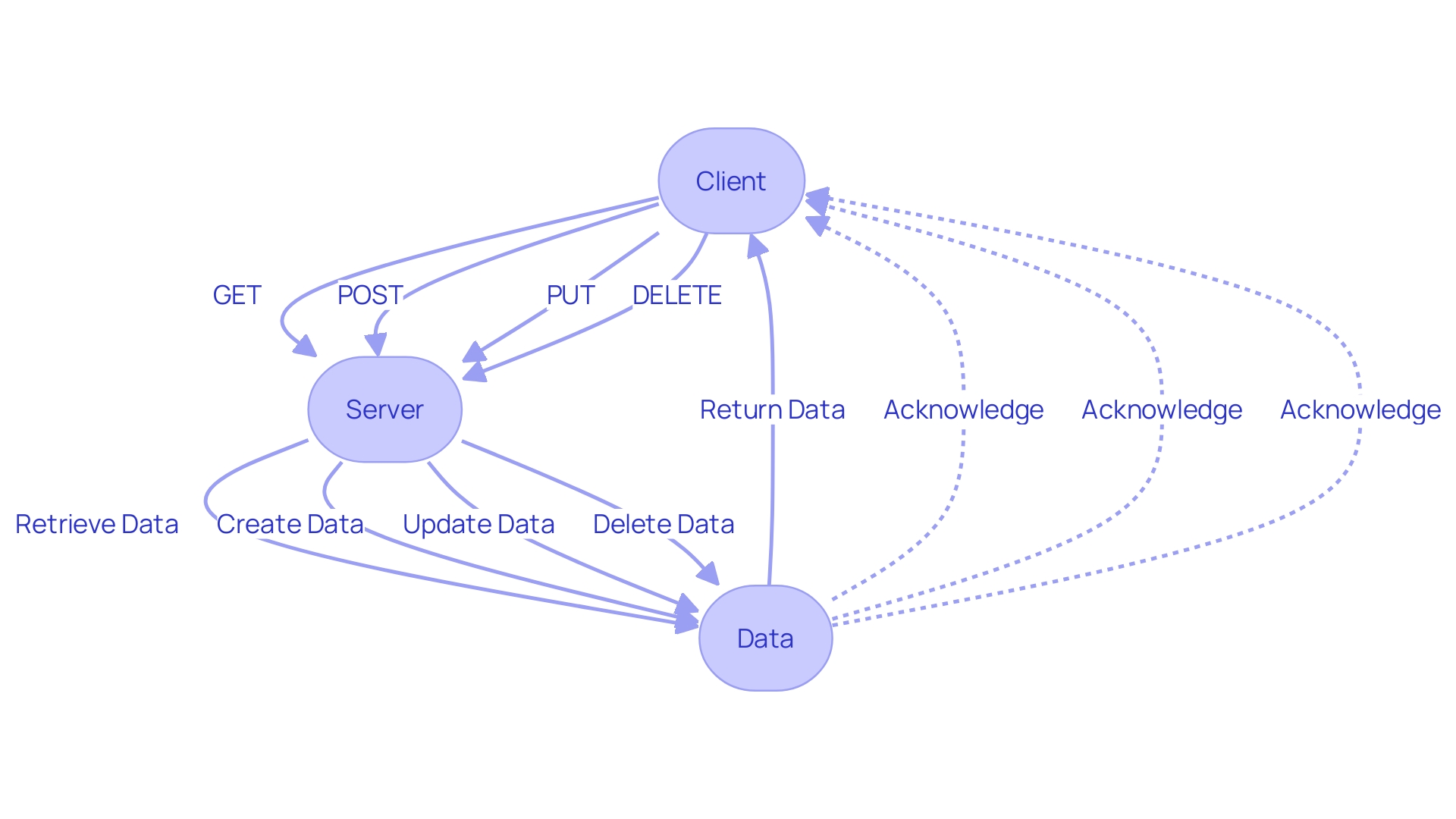
Key Differences Between REST and SOAP APIs
REST and SOAP serve as two primary pathways to constructing APIs, each with its unique traits and operational blueprints. Diving into the world of REST APIs, we find a preference for statelessness and a cache-friendly architecture, integral for crafting scalable and performant web services. REST leverages standard HTTP methods and is typified by its simplicity and ease of integration with web technologies.
On the flip side, SOAP stands as a protocol with a rigorous set of standards, offering built-in features such as transaction compliance, security, and ACID compliance, which are critical for certain enterprise-level business applications. SOAP's support for WS-* standards underpins its robustness in terms of security and transaction handling.
The contrast between REST's lightweight, stateless nature and Soap's heavy-duty, feature-rich design is stark. REST delivers performance and scalability, making it a darling for web and mobile app developers, whereas SOAP offers a level of reliability and formal contracts via WSDL that appeals to enterprises with complex transactional requirements.
In the practical arena, TotalEnergies Digital Factory (TDF) exemplifies the strategic implementation of APIs. TDF, a subsidiary of TotalEnergies, harnesses APIs to modernize legacy systems and spearhead digital solutions across various operational branches. This commitment to API-centric development is shared unanimously among TDF developers, who acknowledge tools like Postman for streamlining collaboration.
The choice between REST and SOAP should be guided by the specific demands of your project. Whether it's the nuanced needs of a global enterprise like TotalEnergies or the agile development of a new mobile app, the decision hinges on factors such as the desired level of standardization, the need for stateful operations, and the importance of caching capabilities.
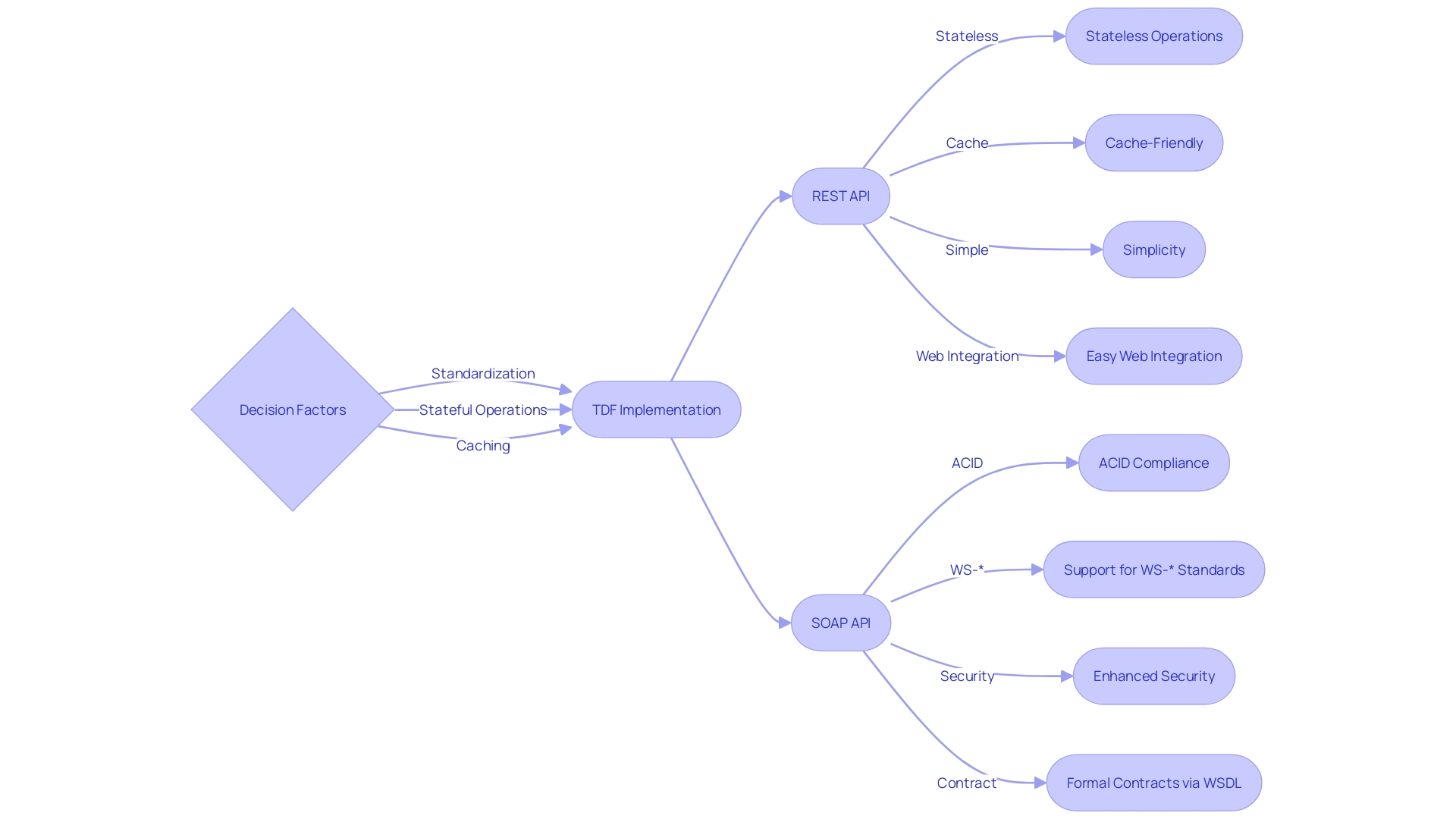
Messaging Protocol
Exploring the communication protocols of REST and SOAP APIs is akin to understanding how a multilingual gathering navigates conversation. Just as people might default to a common language for efficiency, APIs rely on certain protocols to standardize exchanges. SOAP APIs, reminiscent of translating every thought from a native tongue into a shared one, employ the SOAP protocol based on XML, which ensures messages are meticulously structured.
REST APIs, in contrast, leverage the ubiquity of the HTTP protocol, utilizing well-known methods like GET, POST, PUT, and DELETE to facilitate communication.
Picture the Digital Factory of TotalEnergies, which orchestrates over 80 digital solutions deployed across 25 countries. Their developers unanimously acknowledge the ease that Postman, a popular API collaboration platform, brings to their workflow. This reflects the broader trend that 93% of organizations recognize APIs as crucial to breaking down silos and enhancing operational transparency, as reported by Vanson Bourne's 2021 research.
Moreover, the integration of APIs with microservices is seen as a game-changer, with 97% of professionals agreeing that this combination paves the way for heightened efficiency and customer satisfaction. This strategic alignment of APIs echoes the simplicity and effectiveness of Rest's approach, dating back to the internet's inception by Tim Berners-Lee. REST operates on a straightforward client-server model, where one device requests and the other responds, a process that has long been the backbone of internet communication.
In the evolving digital landscape, the choice between REST and SOAP can significantly impact an API's complexity, flexibility, and interoperability, much like the choice between building custom OpenAPI tools or utilizing existing solutions can influence an organization's agility and alignment with its unique needs.
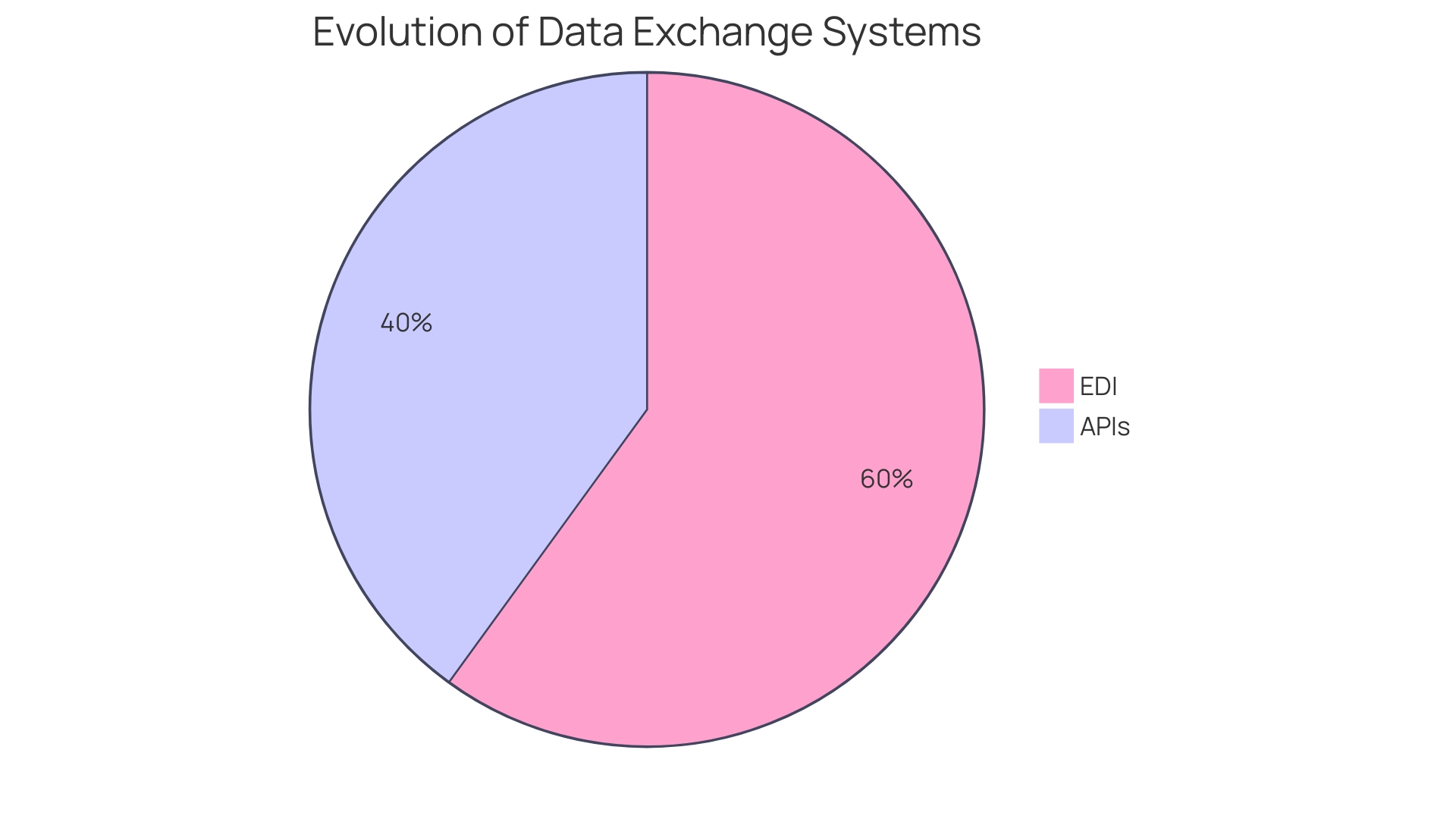
Standards and Compliance
The landscape of APIs is diverse, with different standards and protocols serving unique purposes. SOAP APIs, known for their strict adherence to a set of standards, including the SOAP protocol, WSDL (Web Services Description Language), and WS-Security, present a structured approach to API design. They are like a comprehensive guidebook, offering clarity and completeness in their documentation, which is essential for developers during implementation and troubleshooting.
Conversely, REST APIs offer more flexibility, lacking a strict set of standards but embracing emerging practices and tools, such as OpenAPI (formerly Swagger), to foster understandable and maintainable documentation. REST API documentation, akin to a user-friendly manual, is crucial for conveying how an API operates, ensuring developers can seamlessly integrate and work with the API.
Effective API documentation is not just about listing endpoints and methods; it's about constructing a logical narrative. Just as in a well-run restaurant where the waiter seamlessly connects diners to the kitchen, APIs should offer a frictionless bridge between systems. Documentation should, therefore, start with the basics and build up to more complex information, using clear subheadings and concise bullet points for ease of navigation.
This approach to documentation helps developers understand not only the 'how' but also the 'why' behind an API's functionality.
Moreover, as the digital world evolves, so do the standards and practices surrounding API documentation. Just as past conventions, such as the 'X-' prefix in parameter names, have been deprecated due to their complexity, the field of API documentation is continually adapting to promote better practices and more efficient development ecosystems.
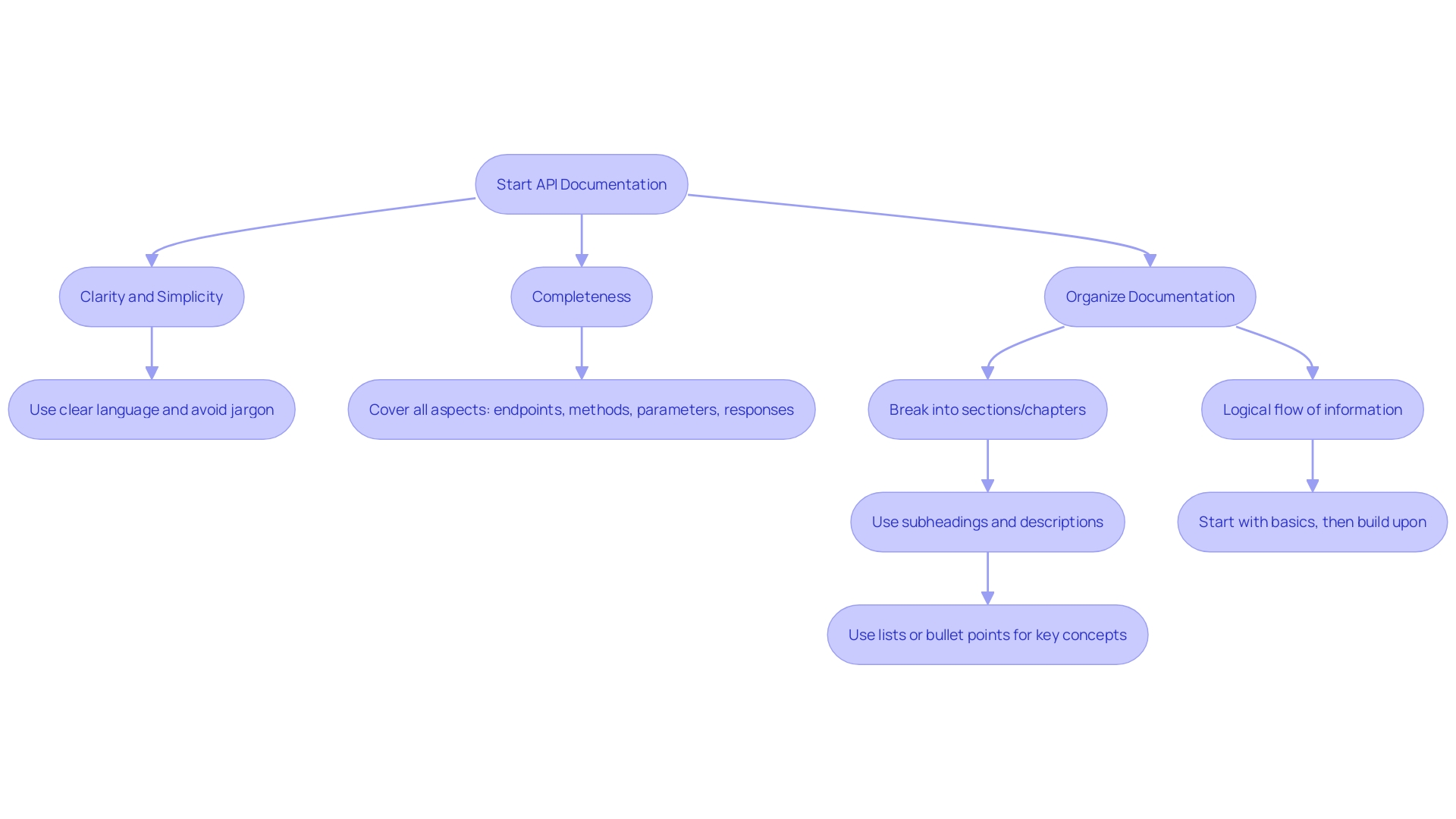
Operations and Features
SOAP APIs are renowned for their comprehensive capabilities, particularly in handling intricate operations like transaction management and robust security protocols straight out of the box. Contrarily, REST APIs are celebrated for their straightforward approach, offering a fundamental set of standard operations, including GET, POST, PUT, and DELETE. Despite this, REST APIs are not limited by these operations alone; they can incorporate additional protocols and frameworks to extend their functionality.
For instance, RESTful services can adopt OAuth for authentication and authorization, effectively bridging any functional gaps with SOAP services.
In the modern digital ecosystem, APIs form the backbone of inter-application communication, powering countless services and applications we interact with daily. Companies like Bosch and TotalEnergies Digital Factory have harnessed the power of APIs to facilitate their digital transformations, with Bosch's solid oxide fuel cell systems benefiting from a digital twin enabled by APIs for operational optimization, and TotalEnergies Digital Factory deploying over 80 digital solutions across 25 countries through API-driven modernization of legacy systems.
Furthermore, developers at TotalEnergies Digital Factory unanimously recognize tools like Postman for enhancing collaboration in API-related tasks, reinforcing the significance of efficient API management and development practices. As we delve into the world of APIs, it is clear that the intricacies involved in API construction are critical for data engineers and developers. Mastery of API development is essential for ensuring applications remain agile, reliable, and scalable in our data-driven age.
The journey towards API excellence is one of technical precision, meeting the real-world demands of software development, and underpinning the digital services that have become integral to our daily lives.
Scalability and Performance
An Application Programming Interface (API) is a crucial bridge for software interactions, serving as a protocol suite and toolkit for building software applications. APIs, predominantly hosted on servers, facilitate the exchange between client-side developers and the server. A client request is processed by the API, which then returns a response to the frontend.
In the field of data engineering, APIs are indispensable for integrating disparate systems and promoting seamless data flow among applications, databases, and analytical tools.
When considering API approaches for scalability and performance, one must take into account the distinct characteristics of SOAP and REST APIs. SOAP APIs, with their XML-based messaging, incorporate comprehensive security and reliability measures by design, but this can lead to heavier payloads. High-load scenarios may reveal performance bottlenecks due to these larger payloads.
Conversely, REST APIs typically utilize JSON, which, being lighter, contributes to improved performance and scalability. REST also leverages the stateless nature of HTTP, enhancing its ability to handle increased loads without compromising efficiency.
This distinction is exemplified by the TotalEnergies Digital Factory (TDF), which relies on APIs to modernize legacy systems and drive digital transformation across global operations. The choice of API approach can significantly affect the ability of a company like TotalEnergies to deploy solutions rapidly and effectively in response to the evolving needs of a dynamic market. As developers and organizations strive to build robust, scalable, and performant APIs, understanding the inherent trade-offs between SOAP and REST is essential to delivering agile and reliable software solutions in our data-driven era.
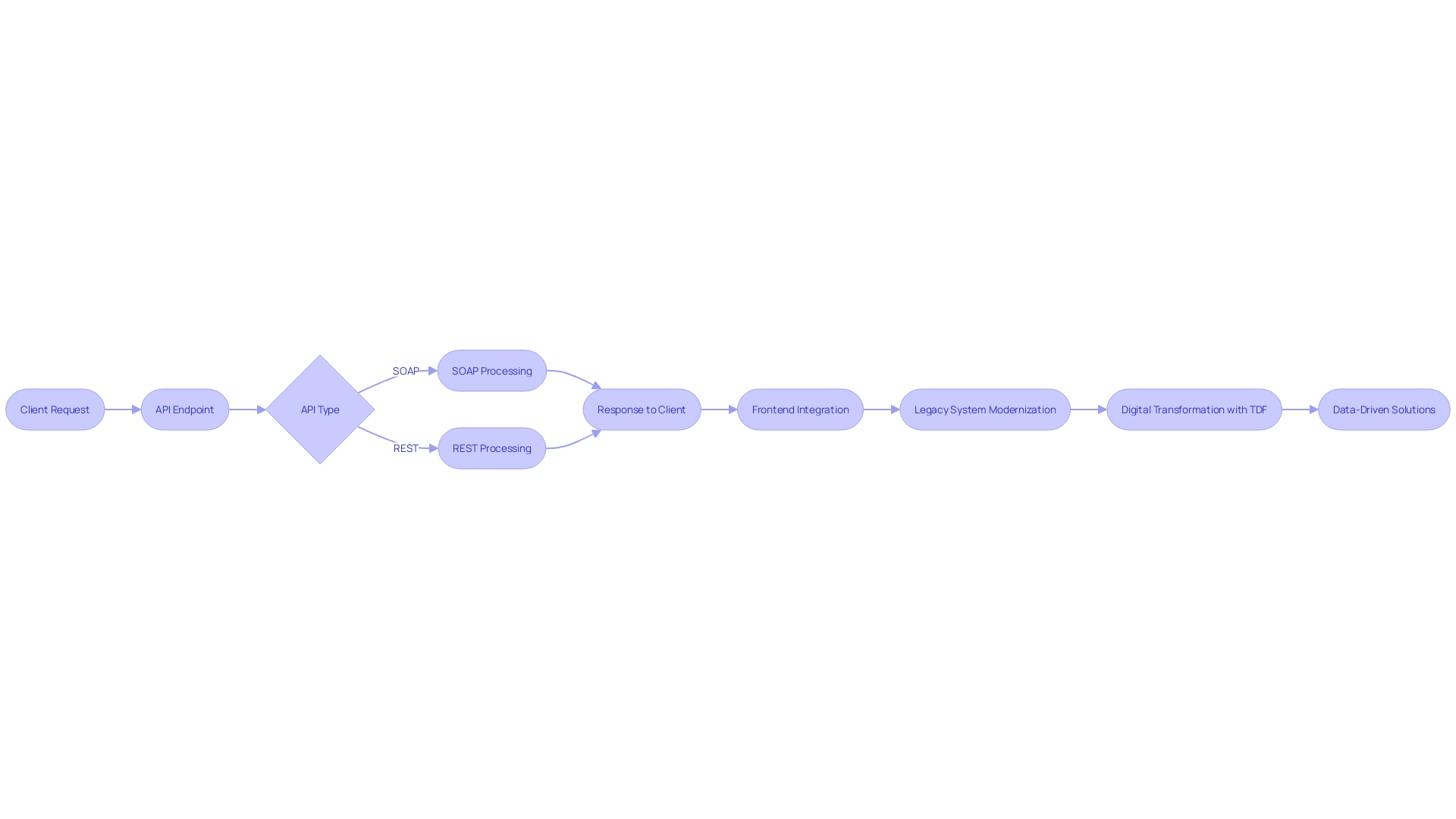
Caching and Statelessness
Understanding the significance of caching within API interactions is crucial for optimizing performance. Unlike SOAP APIs, RESTful APIs harness the power of HTTP caching, a feature that significantly enhances their efficiency. REST APIs, inherently stateless, carry all the necessary data within each request, thereby eliminating the server's need to retain session details.
This stateless nature paired with HTTP caching allows REST APIs to deliver improved response times and minimize bandwidth consumption.
Leveraging a Content Delivery Network (CDN) can further augment this efficiency. Envision a CDN as a distributed network of servers that delivers content by bringing it geographically closer to users. This not only accelerates data transfer but also ensures a quick and satisfying experience for the end-user.
In the world of API design, where every millisecond counts, caching mechanisms serve as an indispensable tool that can prevent overwhelming servers with excessive requests. A real-world testimony to the power of caching comes from an incident where the absence of caching led to a 429 Too Many Requests error due to a breached API rate limit. The consequence was a severe disruption in operations, underlining the importance of caching as a safeguard against such failures.
To encapsulate, caching is a cornerstone in the realm of APIs, delivering not only improved performance and reduced latency but also a robust user experience. As the digital landscape evolves, understanding and implementing effective caching strategies will remain a priority for developers and businesses alike.
Security and Reliability
When designing APIs, security, and reliability should never be an afterthought. SOAP APIs come with a suite of security features, such as WS-Security for encryption and authentication, and they also provide reliable messaging capabilities like message retries and assured delivery. REST APIs, however, typically require additional measures like OAuth or API keys for security, and they don't inherently offer the same level of reliability.
Nonetheless, REST can harness the security provisions of HTTP, which includes SSL/TLS for encryption and the use of HTTPS for secure communication.
As the digital landscape evolves, the integral role of APIs in software development has been underscored by a surge in API breaches. These incidents highlight the necessity of robust security mechanisms, as breaches can lead to the exposure of sensitive data with potentially catastrophic consequences. A case in point involved microservices interacting through APIs, where a rate limit breach caused significant operational disruptions, emphasizing the need for sound security attributes such as authentication and rate-limiting.
Organizations are realizing the importance of comprehensive security strategies for APIs. A staggering 78% of cybersecurity teams report experiencing an API-related security incident in the past year, prompting 81% to prioritize API security more than before. With these concerns in mind, developers and businesses are encouraged to adopt and document corporate API standards and policies, defining what 'good' security posture means in their context, and aligning with best practices and regulatory requirements.
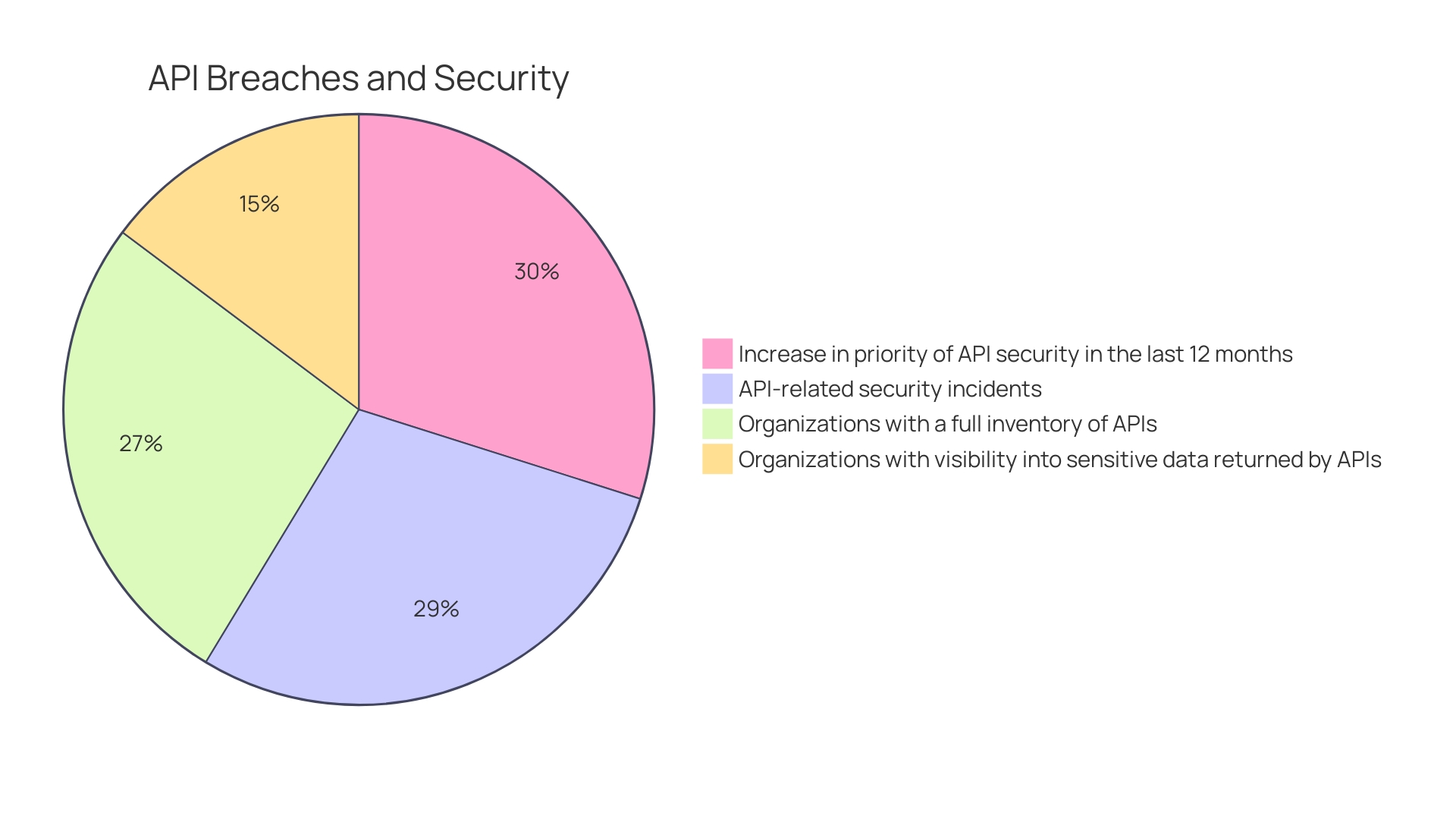
Use Cases for REST and SOAP APIs
Understanding the nuances of REST and SOAP APIs illuminates their unique capacities to accommodate varying project needs. REST APIs shine in public-facing web services, prized for their straightforwardness, scalability, and user-friendliness—qualities paramount for mobile apps, single-page applications, and external integrations. Conversely, SOAP APIs are the go-to for enterprise-level applications, where the stakes are high for security, reliability, and executing multifaceted operations, often in collaboration with legacy systems and within the enterprise's technological ecosystem.
For instance, Bosch's solid oxide fuel cell (SOFC) system, an innovation in the green energy sector, benefits from API integration. The digital twin supporting the SOFC exemplifies the sophisticated use of APIs, enabling meticulous monitoring and optimization of the system throughout its lifetime. Similarly, IFCO's collaboration with Rackspace Technology highlights the prudent selection and utilization of APIs in cloud integration efforts, emphasizing the importance of customer-centric solutions.
APIs are the lifeblood of our interconnected digital domain, facilitating seamless interactions across diverse software platforms. Their critical role in data integration and system connectivity is underscored by the fact that 60% of organizations have experienced an API-related security breach within two years, as reported by Traceable AI. This statistic not only highlights the pervasive use of APIs but also the necessity for robust security measures in API design and deployment.
The dialogue between applications enabled by APIs is not a mere technical convenience but a pivotal component of digital innovation. It empowers businesses to transcend silos, foster synergies among software systems, and adapt swiftly to the evolving demands of the digital landscape. As such, the strategic employment of APIs is instrumental in propelling companies towards achieving and maintaining operational excellence and competitive edge.
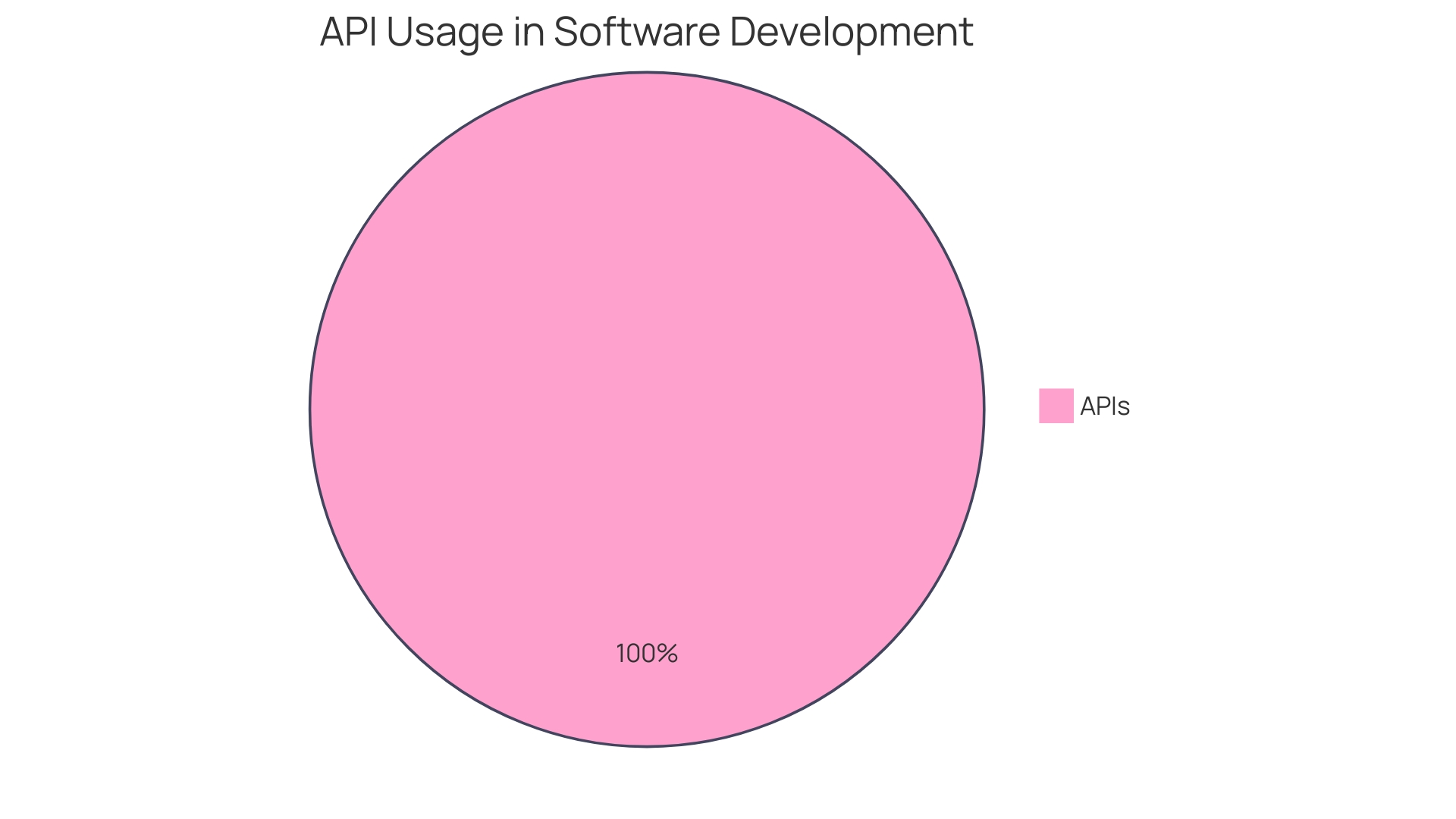
REST for Public Web Services
REST APIs have gained widespread popularity in the world of web services for their straightforward approach and user-friendliness. They are particularly ideal for scenarios where an API needs to be accessed by different clients, such as web and mobile applications. The design of REST APIs is based on the core principles of the web, which ensures their high interoperability and easy accessibility across various platforms and devices.
Since REST APIs operate over the stateless HTTP protocol, they can efficiently handle high traffic loads while maintaining performance and scalability.
In today's digital ecosystem, APIs are essential for facilitating smooth communication between disparate software applications, allowing them to share functionalities and data without deep integration. APIs serve as the backbone of 'API-first' development, a methodology that prioritizes the creation of APIs at the outset of the development process. This strategy underscores the significance of the API's consistency, reusability, and overall quality, which in turn fosters widespread adoption, developer satisfaction, and seamless compatibility with other systems.
Understanding REST APIs is crucial for developers looking to leverage their benefits in application development.
SOAP for Enterprise Applications
SOAP (Simple Object Access Protocol) APIs have long been the backbone of enterprise applications, offering a level of security and reliability that's essential in high-stakes environments. These APIs shine in scenarios where transactions must be meticulous, legacy systems need modernizing, and enterprise-level integration is non-negotiable. With built-in functionalities like transaction management and secure, assured message delivery, SOAP APIs stand out for their compliance with strict standards and their inherent ability to work seamlessly across diverse systems.
For instance, at companies like Bosch, which is steeped in a history of innovation and sustainability, SOAP APIs could be pivotal in managing complex operations like their solid oxide fuel cell systems. These systems not only provide efficient, low-emission power but also rely on digital twins supported by robust APIs to monitor and optimize performance over time. Similarly, TotalEnergies Digital Factory leverages APIs extensively to modernize legacy systems, demonstrating how SOAP APIs can underpin digital transformation initiatives across industries.
Moreover, with the digital acceleration in full swing, the reliance on APIs is more pronounced than ever. Recent research by Vanson Bourne underscores this shift, revealing that 93% of organizations consider APIs critical to their operations, with 97% acknowledging the synergy between APIs and microservices. This reflects a broader trend where APIs are integral to breaking down data silos, streamlining productivity, and enhancing customer satisfaction.
Therefore, in the context of enterprise applications, SOAP APIs are not merely a preference; they are a strategic imperative for businesses aiming to maintain a competitive edge in a digitally evolving landscape.
Final Thoughts and Recommendations
When selecting the appropriate API type for your project, it's crucial to evaluate specific elements like security protocols, system reliability, the intricacy of operations, expansion capabilities, and the ability to work with different systems. REST APIs are known for their straightforwardness, scalability, and user-friendliness, making them an excellent option when these are your primary concerns. Conversely, SOAP APIs are distinguished by their robust security, dependable communication, and capability to handle complex transactions, suiting needs where these factors are paramount.
Take for instance TotalEnergies Digital Factory (TDF), which is at the forefront of operational digital solutions development, having launched over 80 solutions across 25 countries. Their commitment to digital transformation is underscored by the central role of APIs in modernizing legacy systems. With unanimous agreement among developers at TDF on the benefits of tools like Postman for seamless collaboration, it's evident that the right API choice can significantly influence the success of digital initiatives.
It's worth noting, as highlighted by recent discussions on application protocol standards, that the deprecation of the "X-" prefix convention reflects the evolving nature of best practices in software development. This evolution underscores the importance of remaining flexible and adaptive in choosing between API styles.
Moreover, there is an emerging trend of hybrid approaches where SOAP is utilized for internal communications within an organization, while REST is employed for public-facing APIs, combining the best of both worlds where applicable.
In essence, your decision should be informed by a thorough analysis of your project's requirements, aligning with the goals and strategies of successful companies that have integrated API solutions effectively into their operations.
Conclusion
In conclusion, SOAP and REST APIs offer distinct approaches in the world of web services and software applications. SOAP APIs excel in enterprise-level applications, providing robust security, reliable transaction management, and compliance with strict standards. REST APIs, on the other hand, prioritize scalability, simplicity, and ease of integration for public-facing web services.
SOAP APIs utilize the SOAP protocol based on XML, ensuring structured messages, while REST APIs leverage the HTTP protocol and familiar methods like GET, POST, PUT, and DELETE. Both protocols facilitate efficient and standardized exchanges between applications.
Standards and compliance are important in API design. SOAP APIs adhere to strict standards, offering comprehensive documentation. REST APIs rely on emerging practices and tools like OpenAPI for maintainable documentation.
SOAP APIs provide built-in security, reliability, and support for complex operations. REST APIs offer a fundamental set of operations and the ability to incorporate additional protocols and frameworks.
Scalability and performance are critical factors. SOAP APIs have heavier payloads due to XML, while REST APIs use lighter JSON formats and the stateless nature of HTTP for improved performance and scalability.
Caching and statelessness are essential for API performance. REST APIs leverage HTTP caching and statelessness to improve response times and minimize bandwidth consumption.
Security and reliability are crucial. SOAP APIs have built-in security features, while REST APIs require additional measures like OAuth or API keys.
Understanding the use cases is important. REST APIs are well-suited for public-facing web services and integrations, while SOAP APIs shine in enterprise-level applications with security and complex operations.
In conclusion, APIs drive digital innovation and operational excellence. By understanding SOAP and REST APIs, developers and businesses can make informed decisions to drive efficiency and productivity. The strategic use of APIs is essential for maintaining a competitive edge in the digital landscape.
Start using Kodezi today and boost your API development efficiency!
Frequently Asked Questions
What is a SOAP API?
SOAP, or Simple Object Access Protocol, is a protocol used for exchanging structured information in the implementation of web services. It uses XML to encode messages and typically relies on HTTP or SMTP for message transmission. SOAP APIs are known for their high security and strict communication standards, making them suitable for complex enterprise systems.
How does the Bosch SOFC system utilize APIs?
Bosch's Solid Oxide Fuel Cell (SOFC) system uses APIs to integrate with a digital twin, a virtual model that reflects the physical SOFC. This enables real-time visualization and monitoring of the system's performance, optimizing its operation throughout its lifecycle.
What is the importance of APIs for TotalEnergies Digital Factory?
TotalEnergies Digital Factory (TDF) employs APIs as the core of its digital transformation efforts. By using APIs, TDF has developed over 80 digital solutions that enable secure data exchange and modernization of their legacy systems across the company's extensive operational network.
What do most organizations recognize about the importance of APIs?
According to the Vanson Bourne report in 2021, 93% of organizations recognize the critical role of APIs in their operations, with 97% agreeing on the enhanced performance and productivity benefits when integrating APIs with microservices.
Why is API security a growing concern for organizations?
With the increased prevalence of APIs, they have become a target for cybercriminals. Recent findings indicate that 78% of cybersecurity teams have encountered API-related security incidents, leading 81% of organizations to place a higher emphasis on API security.
What is a REST API?
A REST API is an Application Programming Interface that adheres to the principles of Representational State Transfer. It uses standard HTTP methods like GET, POST, PUT, and DELETE, which correspond to the CRUD (Create, Read, Update, Delete) operations. REST APIs are known for their scalability, statelessness, and ease of use, often returning data in JSON or XML formats.
What are the key differences between REST and SOAP APIs?
REST APIs are designed for statelessness and scalability, using standard HTTP methods for communication, which makes them ideal for web and mobile applications. SOAP APIs follow a more stringent set of standards, including security and transaction compliance, making them suitable for enterprise-level applications with complex transactional requirements.
How do messaging protocols differ between REST and SOAP APIs?
SOAP APIs utilize the SOAP protocol based on XML, ensuring structured messages, while REST APIs leverage the HTTP protocol with well-known methods like GET, POST, PUT, and DELETE, facilitating communication in a more straightforward manner.
What are the standards and compliance considerations for SOAP and REST APIs?
SOAP APIs adhere to strict standards like SOAP protocol, WSDL, and WS-Security, offering structured API design. REST APIs offer flexibility and use tools like OpenAPI for maintainable documentation, lacking a strict set of standards but embracing best practices for clear and logical API documentation.
How do operations and features vary between SOAP and REST APIs?
SOAP APIs provide comprehensive capabilities for complex operations and security protocols. REST APIs focus on a fundamental set of operations but can extend functionality with additional protocols and frameworks, such as OAuth for authentication.
Why is scalability and performance important in API design?
Scalability and performance are critical as APIs need to handle high traffic without performance degradation. SOAP APIs may have performance limitations due to larger payloads, while REST APIs, often using lighter JSON payloads, support better performance and scalability in high-load scenarios.
What is the role of caching and statelessness in REST APIs?
Caching is significant in REST APIs, enhancing efficiency by storing frequently accessed data. The stateless nature of REST APIs means each request contains all necessary information, eliminating the need for the server to retain session details, which improves response times and minimizes bandwidth usage.
How do security and reliability considerations differ between SOAP and REST APIs?
SOAP APIs have built-in security features like WS-Security and reliable messaging. REST APIs require additional security measures like OAuth and do not inherently offer the same reliability level but can utilize HTTP security provisions like SSL/TLS.
What are some use cases for REST and SOAP APIs?
REST APIs are ideal for public web services, mobile apps, and external integrations due to their simplicity and scalability. SOAP APIs are preferred for enterprise-level applications that require secure, reliable, and complex operations, often integrated with legacy systems.
When should you use REST APIs for public web services?
REST APIs are well-suited for public web services where different clients need to access the API across various platforms due to their interoperability, ease of use, and ability to handle high traffic loads while maintaining performance.
Why are SOAP APIs favored for enterprise applications?
SOAP APIs provide the security and reliability needed for high-stakes enterprise environments. They support complex transactions and offer features like assured message delivery, making them the choice for serious enterprise applications and digital transformation initiatives.
What should be considered when choosing between REST and SOAP APIs for a project?
When choosing between REST and SOAP APIs, consider factors such as security requirements, system reliability, complexity of operations, scalability, and interoperability with different systems. The choice will depend on the specific needs of your project and the primary concerns you are aiming to address.




